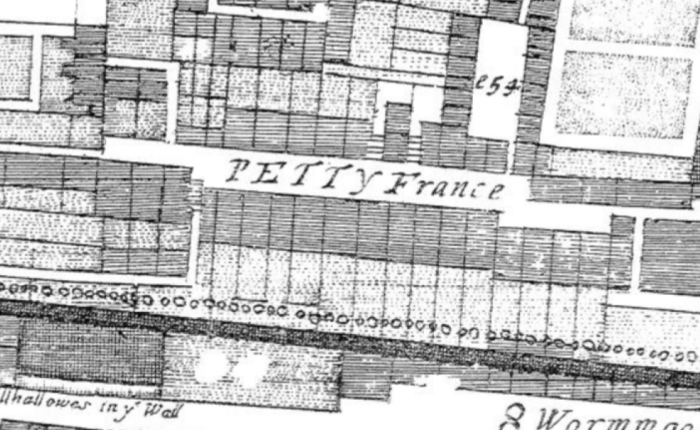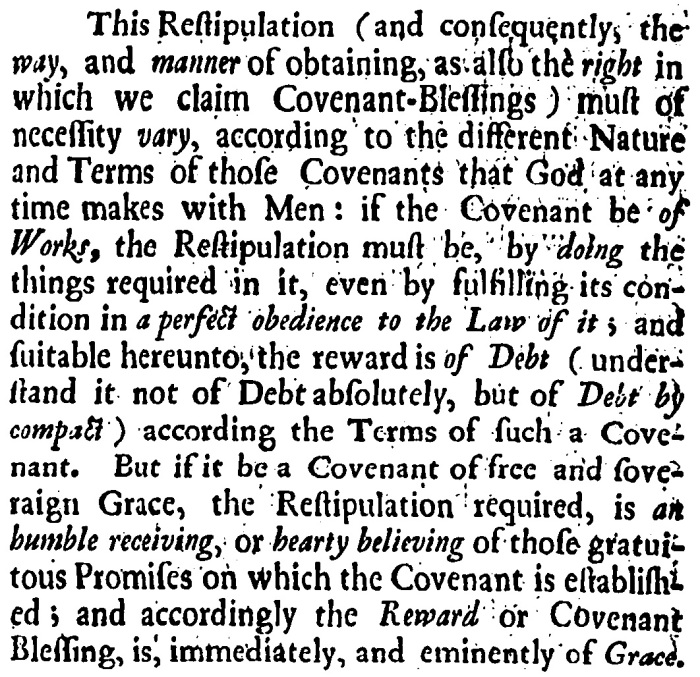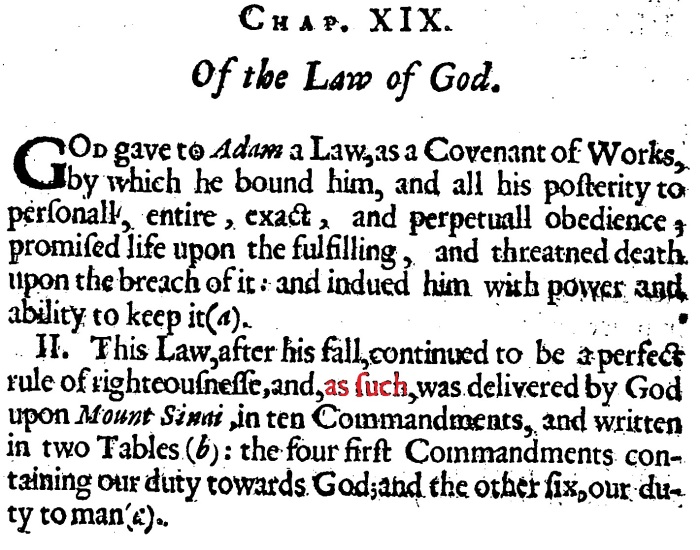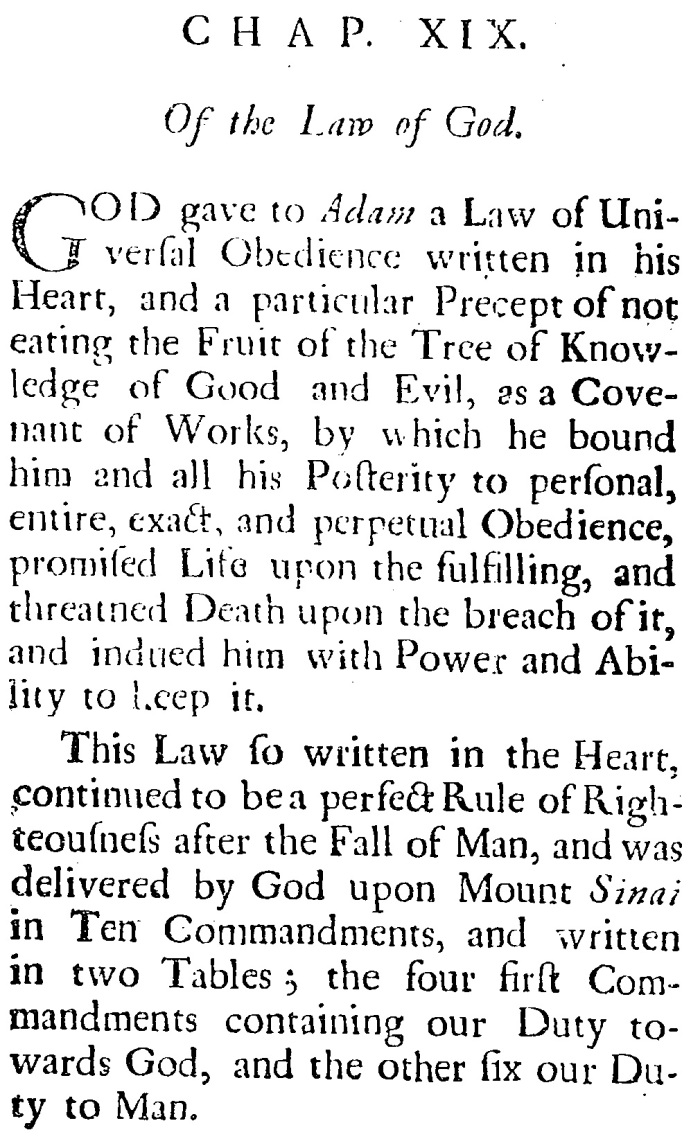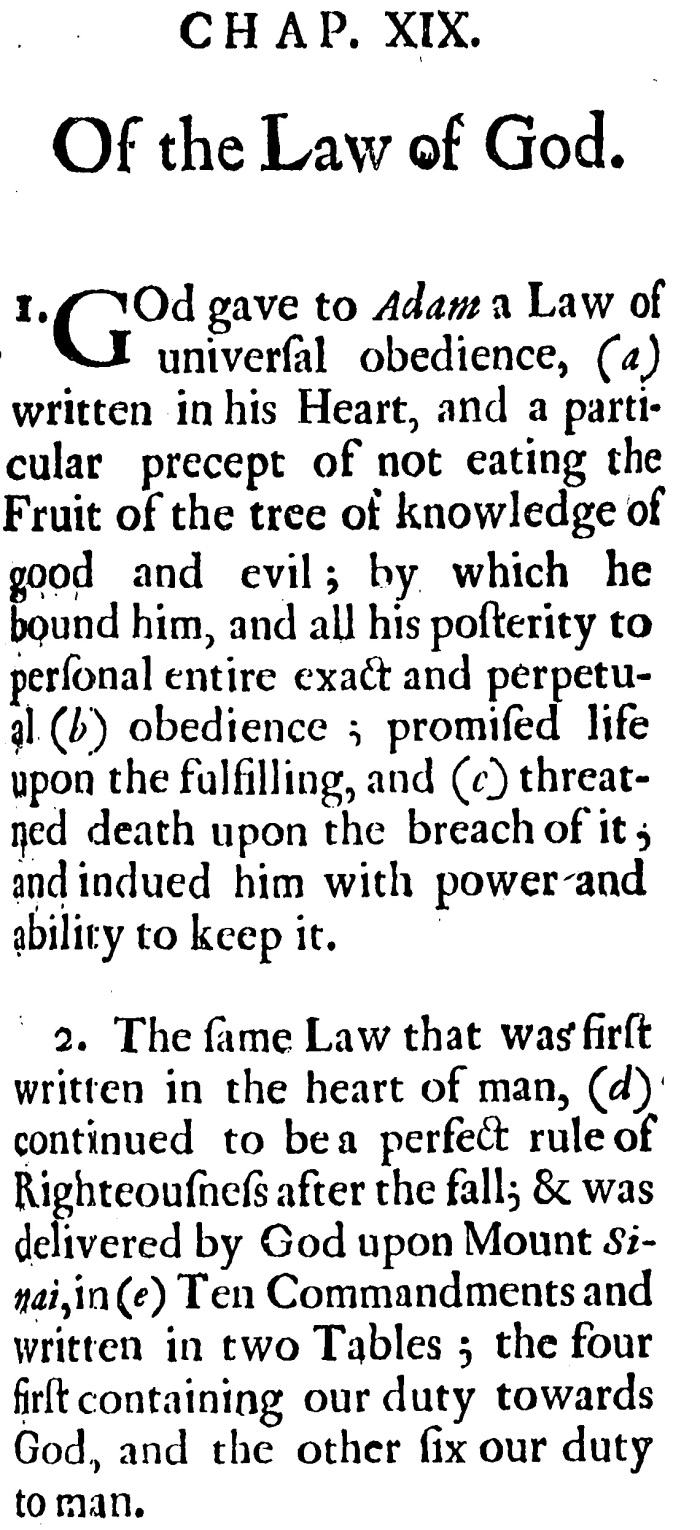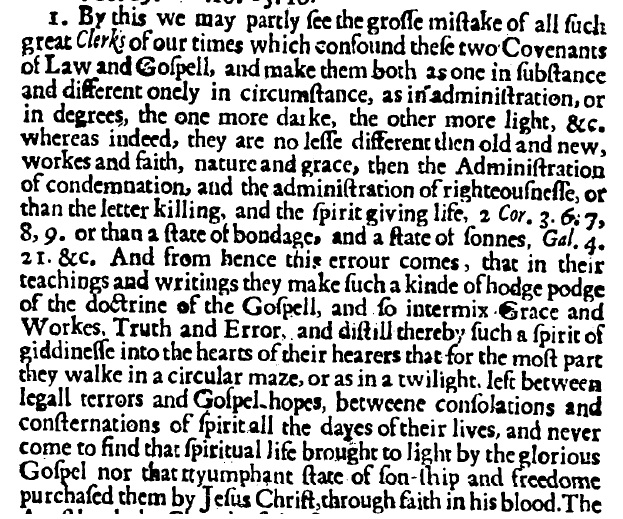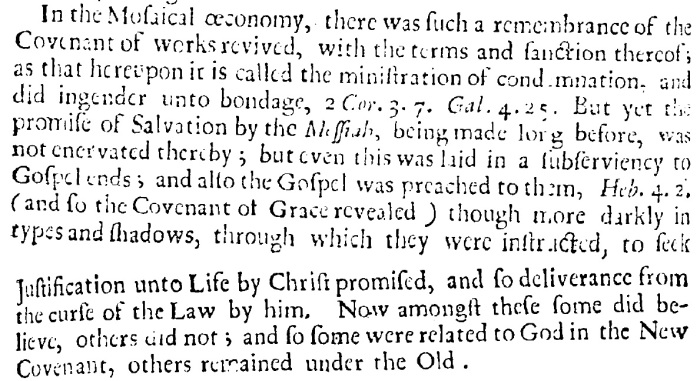In the debates of credobaptism vs. pædobaptism in the seventeenth century, a great number of books and pamphlets were produced. These, in turn, have led to a corresponding quantity of secondary literature about the two sides of the debate. When looking at the sides as opposites, one of the features that can disappear from view is the diversity of each side.
It has been my experience (and this is a vague generality) that pædobaptists are often unaware or at least disinterested in the diversity of their own tradition. Baptists are equally liable to this deficiency, but in this post I want to present a pædobaptist speaking to pædobaptists in the context of the credo vs. pædo debates.
Joseph Whiston (d.1690), a Congregationalist (or Independent) minister of Lewes, Sussex wrote several works advocating pædobaptism and criticizing credobaptism. He interacted with Henry Danvers (not a Particular Baptist), Edward Hutchinson, Thomas Delaune, and Nehemiah Coxe (all three were Particular Baptists). John Flavel commended Whiston’s contribution to this ongoing debate.
In one such work published in 1676, An Essay to Revive the Primitive Doctrine and Practice of Infant-Baptism, Whiston initiated a discussion about the definiteness of the covenant. Are the promises made definitely or indefinitely to the infant-seed of believers? The context of this discussion was the Baptist criticism of the pædobaptist covenantal system that if the promise is made to the children, and yet not all children come to faith and salvation, then God is unfaithful to his promises and the covenant is not sure.
Whiston’s solution is surprising, and I believe that most, if not all, my pædobaptist friends today would reject it. But what is equally surprising is that for Whiston, the model that I would consider the common position then, and now, is untenable. Whiston considers it indefensible. I am genuinely curious to know how my modern pædobaptist friends would respond to Whiston. And, without desiring to be provocative, I also wonder to what extent my pædobaptist friends have faced the issue Whiston is addressing without retreating to generalities and formulae.
If you read the portions below and more of Whiston’s work itself, you will see that one of the recurring factors of Whiston’s argument is how ministers handle the death of the infants of believers. On what ground do ministers reassure parents of the salvation of their dear deceased little ones? If the covenant is not made definitely with the seed, and if they do not all enjoy the promises made in the covenant, how can ministers speak in this way?
I have transcribed relevant sections below, updated spelling in general, and to some degree divided his paragraphs into more natural divisions (as I read his argument). All bracketed content is mine. You can see the original through the link above.
So, here follows Joseph Whiston’s words as a pædobaptist to pædobaptists regarding the definiteness of the covenant of grace as it is made with the infants of believers. He begins by setting out varying positions, then advocating his own in contrast with the rest.
It may not be unuseful, but seems necessary, that I should give a brief account of the different apprehensions of pædo-baptists themselves about the nature of the covenant and promises, as entered with, and made to the infant-seed of believers, because that they are not all of one mind and judgment about that must be granted. And according to their different apprehensions about the nature of the covenant and promises, they are differently persuaded as to the good accruing to infants by their covenant-interest, and their having the token of the covenant applied to them.
Some conceive that the covenant is entered with the seed of believers only indefinitely, and answerably that the promises appertaining to them are to be interpreted and understood in an indefinite notion; that is, as having a respect to them as generally and collectively considered, but not made to any of them in particular. And of those that go this way, some conceive that the covenant and promises appertain only to the elect, and secure to them only the future enjoyment of all the saving fruits and benefits purchased by Christ; but do not necessarily convey to, or confer upon them any of those fruits or benefits for the present, and consequently, that by the application of the token of the covenant, only jus ad rem [a right to the thing], not jus in re [a right in the thing] is sealed and confirmed.
Others conceive that as the covenant and promises thereof have only an indefinite respect to the seed of believers, so that at least some of them have those saving benefits and blessings actually granted to and conferred upon them, and consequently that they are actually regenerated, and have a full and complete union with Christ, the remission of sins, the love and favor of God, &c. And some having these benefits and blessings actually conferred upon them in their infancy, we are to presume it may be so with each one in particular; and on that ground are to apply the token of the covenant to them universally.
And this opinion, could it be clearly proved from Scripture, would free the controversy about infant baptism from many difficulties it must be confessed it is otherwise attended with: but for the reasons after to be given, I cannot, but at present lay it aside cum pace tantorum virorum [with respect to such great men].
Secondly, others conceive that the covenant is entered with the seed of believers definitely, and answerably that the promises appertaining to them are to be interpreted and understood in a definite notion; and consequently, that as the covenant, as at first established with Abraham, did extend to Ishmael, as well as to Isaac, so is still continued to all believers, and each one of their seed in particular.
And some of these that go this way conceive, that all the infants of believers have true grace, in particular true faith, wrought in them either antecedent to the application of the token of the covenant, or at the time of its application, if not by, yet in a concurrence with it. But this opinion necessarily inferring a possibility to lose, and fall from the truth of Grace, is rejected by the generality of Protestants, especially that bear the denomination of Calvinists.
Yet some grant, yea assert some kind of supernatural operations of the Spirit to antecede, at least accompany the application of the token of the covenant to them, whereby at least a posse agere [an ability to act though not actually acting], or some dispositions facilitating their saving acting of grace are wrought.
But others distinguish of the covenant: it is say they, internum, aut externum, it is either internal, or external: by the internal covenant, they seem to mean the covenant as really and truly entered with the elect, ensuring to them grace and glory: by the external covenant they seem to mean the covenant as visibly appearing to be made with men, whether infants, or adult, when as it is not indeed really entered mutually between God and them. This latter way of God’s entering covenant with men, whether young or old, is expressed by some, by entering covenant with them in or according to an ecclesiastical dispensation, that is, as they express themselves in a visible church way.
Again others, and sometimes the same men distinguish of the good contained in and conveyed by the promises of the covenant appertaining to the seed of believers: it is, say they, either spiritual and saving, or else only external and ecclesiastical; as membership in the visible church, a right to the outward ordinances and privileges of the church, and the like. And they conceive that the covenant, as containing saving spiritual mercies, only appertains to the elect; but, as containing external ecclesiastical privileges, it appertains to all the seed of believers: hence they call it, as entered with them, a covenant of privileges.
This latter opinion concerning the definiteness of the covenant I take to be according to truth, though to distinguish either of the covenant or the good contained in it, as entered with, or extended to infants, I see no ground, neither do I think it is at all necessary; but I say, as to the nature of the covenant, I doubt not, but that it is entered with, and extended to the infant-seed of believers definitely, and answerably [correspondingly] that the promises appertaining to them are to be interpreted and understood in a definite notion, as appertaining equally and alike to each one in particular: I speak of the covenant and promises, as entered with and made to the seed of believers merely as such.
There are, it’s true, some promises of the covenant appertaining unto them, which are to be interpreted and understood in an indefinite notion, as has been afore declared; but those appertain not to them merely as the seed of such parents, but as members of the visible church. (100-103)
What follows is a part of Whiston’s defense of his position that the covenant is made with the seed of believers definitely.
That which is firstly and primarily ratified sealed and confirmed to infants (and the same is true of the adult) by the application of the token of the covenant to them, is the covenant it self, as more generally and absolutely considered; and consequently, and as the immediate and necessary result thereof, that which is ratified and confirmed is their covenant-state. They are (as I may so speak) solemnly invested and settled in a covenant-state with God; they are absolutely de presenti [in the present] removed from under the first covenant entered with all mankind in Adam, and solemnly invested with, and initiated into a new covenant-state. Hence circumcision (and the same is true of Baptism) is said to be the token of the covenant, as absolutely considered, Gen. 17.11 as the one had, so the other has a first and primary respect and reference to the covenant as absolutely taken; and consequentially to the state of those that are taken into covenant; they are thereby solemnly put, and settled in a new covenant-state and relation Godward: though I deny not, but that the new covenant or covenant of grace is conditionally made with all or rather offered to mankind; there is an offer and tender of Christ with all his benefits to all men upon condition of faith and repentance…
But the seed of Believers are actually received into the covenant of grace, solemnized, ratified, and confirmed by the application of the token of the covenant to them and from this change in their states I conceive a discharge and immunity from the condemning power of original sin, whether originans or originatum [the original sin of Adam, and the pollution of nature resulting from Adam’s sin], does necessarily arise and result unto them.
All those that are actually under the covenant of grace, as definitely entered with them, are de presenti [in the present] freed from [the covenant of works], seeing there is an absolute inconsistency between being under the law, and under grace, at one and the same time. The Apostle, Rom. 6.14 sets these two states in a direct antithesis or opposition the one to the other; whether we understand by law here, the mosaical law, or the law as given at Mount Sinai, wherein there was a revival of the law of works made with Adam in innocency, or that first law or covenant as so made with Adam; yet by grace I conceive we must understand the covenant of grace, and then ’tis all one as to my present purpose: no man can be under two covenants that are in nature or kind directly opposite the one to the other, at one and the same time. Hence I say, the infants of believers, being under the covenant of grace, they must needs be set free from the first covenant in the same sense that all believers are.
And as for the covenant of grace that threatens condemnation against none but either final rejecters of it, as in the case of those that are yet strangers to it, or total and final violators of it, as in case of those that are actually under it, and being free from the sanction of the first covenant, and not under any obligation to suffer future condemnation, either as rejecters, or violators of the second, I conceive their immunity from the condemning power of original sin, yea of whatever sin, whether original or actual they fall under the guilt of, during their pure infant-states, must necessarily ensue, though no express promise of pardon (which I conceive it is not necessary to enquire after) should appertain unto them, cessante obligatione legis & non obligante novo foedere [the threat of the law having ceased, and not under the threats of the new covenant], there can be no condemnation to them on the account of any sin chargeable upon them. (111-114)
At the heart of Whiston’s position is not just the mutual exclusivity of the covenants of works and grace, but also the simple logic of what it means to be in a covenant. He says that we cannot say our children are in the covenant unless we likewise affirm that they enjoy the benefits of the covenant.
Those that have no good, that is of the essence and substance of the covenant, have no present interest in the covenant. but unless infants have that good afore declared, they have no good that is of the essence and substance of the covenant. Ergo. This argument in the whole of it is so obvious to every ordinary understanding, at least [it] will so evidently appear upon a diligent search, that I shall surcease the proof of it. (154)
Similarly, Whiston argued that an indefinite promise to children is an insufficient ground for the application of the token.
And hence, by the way, how can a supposal of [the covenant being made indefinitely with the seed of believers] be a sufficient ground for the application of the token of the covenant, of which the covenant gives no assurance? (177)
Whiston again argues against an indefinite model by answering an objection.
Objection. It will be said, ‘Tis true the infant-seed of believers, and that universally, visibly appear to us, and may be hoped according to a judgment of charity, to have all that good, and all those benefits and privileges afore assigned to them, as they are the seed of such parents, conferred upon and ensured to them by the covenant, as confirmed by the application of the token thereof to them, but that they have all that good, and all those benefits and privileges really and truly actually granted to, and conferred upon them in their pure infant-state, is more than we can affirm; inasmuch as secret things belong to God, but things revealed to us and our chidlren.
Answer. I confess, most that have pleaded for Infant-baptism upon this ground, viz. their interest in the covenant, do too commonly express themselves to this purpose, but it seems past all rational doubt, and is so to me, that what they visibly appear to have by virtue of their interest in the covenant, that they have in reality and truth. (181)
Natural questions arise, of course, as to how Whiston’s definite covenant model handles the children of believers that abandon the faith. He argues that though the infant seed of believers are freed from original sin’s guilt and pollution, they are not necessarily regenerated, nor do they have the Holy Spirit.
For that which may yet further be pleaded, namely, the improbability that any should be in covenant with the Holy Spirit, and yet have no benefit by him, either in regard of any saving, no, nor any common operations that have a direct conducency [leading connection] to their future salvation. To that I would say in the general, that how improbable soever this may seem to be, yet no sound argument can be drawn therefrom, to prove the conclusion inferred in the forementioned objection. God may receive the infant-seed of believers into covenant with himself, and that universally, and vouchsafe them all the good and all the privileges afore assigned to them, and yet it will not necessarily follow from thence, that any such operations of the Spirit should be granted to them. (168)
The covenant doth not assure any of regeneration in their infancy, as they are Elect, for then all the elect seed of believers should be regenerated in their infancy; the contrary whereunto is evident, in that many of the seed of believers, in whom there is not the least shew or appearance of grace from their very infancy till they come to full age, yea possibly till they come to old age, are yet at last converted and brought to a saving close with Christ. (178)
And when the children of believers come of age, they can “willfully sin away their mercies.” (180) This is possible, Whiston says, because “The covenant of grace is immutable, when the Spirit, which renders it so, is actually given.” (185)
The extent to which Whiston represents anyone beyond himself is an important question, though he does appeal to “the generality, if not the universality of all the ancients, and many of our modern divines, as the Lutherans, the Divines of the Synod of Dordt, with many others” to support his argument for the “immunity from the condemning power of original sin” for the infants of believers (117).
But I bring his writing to light as a way of reorienting the polarity of polemics. Whiston’s criticisms of the indefinite model of how God covenants with the children of believers are based on the same premises used by the Particular Baptists to make similar arguments. For example, Nehemiah Coxe said,

And Hercules Collins argued that if pædobaptists will only go so far as saying that their children are externally or visibly in the covenant, and the rest is left to God, that is, if the covenant is only made indefinitely…
“If we ask what they mean by Infants of Believers being in the Covenant of Grace? They answer, they are in the External part of the covenant; if you ask, what is that? They say, the Administration of the Covenant; if you ask, what is that? They will tell you it is Baptism; so that the whole amounts to no more than this, such children they ought to be baptized, because they ought to be baptized.”
This discussion is the same context for the Particular Baptists’ criticisms of the Westminster catechism’s description of baptism and the covenant of grace relative to union with Christ and the relation of infants to the same.
So, I query, is the covenant made definitely or indefinitely with the infant seed of believers? If we grant the formula “I will be a God to you and your children” to be a general formula belonging to all believers, is this formula and promise definite or indefinite?

